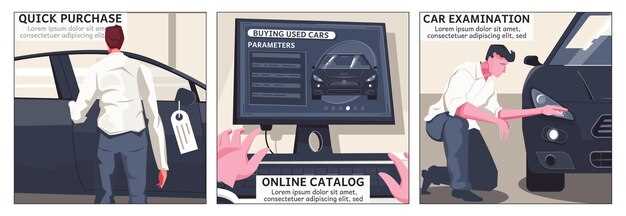How to Improve Steering Response with a Quick-Ratio Rack


In the ever-evolving world of automotive engineering, the demand for enhanced steering precision has become a pivotal focus for manufacturers and enthusiasts alike. Traditional steering systems often struggle to provide the responsiveness and agility that modern driving requires. This is where quick-ratio racks emerge as a transformative solution, offering remarkable improvements in driver control and vehicle dynamics.
Quick-ratio racks are designed to reduce the number of turns needed to lock the steering, allowing for quicker response times. This not only enhances the overall driving experience but also contributes to improved safety, especially in high-speed or performance situations. By optimizing the relationship between steering effort and vehicle response, quick-ratio racks unlock the potential for a more engaging and intuitive driving experience.
Adopting a quick-ratio steering rack can significantly benefit various driving contexts, from competitive racing to daily commuting. This article delves into the mechanics behind quick-ratio racks, their advantages over conventional systems, and the considerations for implementing them in different vehicle applications. Understanding these key aspects is essential for any driver looking to elevate their vehicle’s handling and performance.
Understanding Quick-Ratio Steering Racks: Key Features
Quick-ratio steering racks are designed to enhance vehicle handling and responsiveness. These steering systems feature several key characteristics that distinguish them from standard racks, providing drivers with a more engaging and precise steering experience.
- Steering Ratio: Quick-ratio racks have a higher steering ratio compared to standard ones. This means that the wheels turn more quickly in relation to the steering wheel movement. Typically, a ratio of 12:1 or lower is considered quick-ratio, allowing for sharper turns and improved maneuverability.
- Reduced Steering Input: Due to the higher ratio, drivers can achieve more significant changes in wheel angle with less effort. This reduction in steering input enhances driving comfort and control, particularly in high-performance situations.
- Increased Feedback: Quick-ratio racks offer better road feel and feedback. This improved connection between the steering system and the road provides drivers with increased confidence when navigating curves or responding to abrupt changes in road conditions.
- Compatibility: These racks are often designed to be compatible with various vehicle types, particularly sportscars and performance vehicles. Manufacturers may produce quick-ratio versions tailored specifically for certain models, ensuring an optimal fit and performance boost.
- Durability and Build Quality: Quick-ratio steering racks are usually constructed from high-quality materials to withstand the rigors of spirited driving. Enhanced durability ensures longevity and consistent performance over time.
In summary, quick-ratio steering racks provide essential benefits that enhance control, responsiveness, and overall driving experience. Their unique features cater to enthusiasts seeking sharper handling and communication with the vehicle, making them a popular choice for performance-oriented applications.
Benefits of Quick-Ratio Racks for Performance Vehicles
Quick-ratio racks significantly enhance the steering response of performance vehicles, allowing for quicker and more precise handling. This improved responsiveness is crucial during high-speed maneuvers and cornering, where split-second decisions can influence vehicle stability and overall performance.
One of the primary advantages of quick-ratio racks is the reduction in steering effort required. Drivers can achieve desired steering angles with less input, facilitating a more engaging driving experience. This efficiency is particularly beneficial on racetracks or during competitive driving events, where quick reactions are necessary.
Moreover, these racks contribute to better feedback from the road surface. Enhanced communication between the vehicle and the driver helps in assessing grip levels, making it easier to adjust driving techniques in real-time. This is particularly important in performance scenarios where maintaining control is paramount.
Quick-ratio racks also play a role in reducing understeer and oversteer tendencies. By offering a more direct connection to the front wheels, drivers can better balance their vehicles in corners, promoting a more predictable handling characteristic. This stability enhances confidence, allowing drivers to push their vehicles closer to their limits.
Additionally, the installation of quick-ratio steering racks can improve the overall aesthetics of the vehicle’s interior. Enhanced steering systems often come paired with upgraded components, resulting in a more refined cabin experience aligned with the performance goals of the vehicle.
Finally, quick-ratio racks are typically lighter than their standard counterparts, contributing to decreased overall vehicle weight. This reduction not only improves acceleration and braking performance but also enhances fuel efficiency, making quick-ratio steering a wise choice for those seeking both performance and practicality.
Installation Process: Upgrading to Quick-Ratio Steering
Upgrading to a quick-ratio steering system can significantly improve your vehicle’s handling and responsiveness. This installation process requires attention to detail and a basic understanding of automotive mechanics. Follow these steps for a successful upgrade.
First, gather all necessary tools and parts, including a quick-ratio steering rack, compatible tie rod ends, wrenches, and safety equipment. Make sure to reference your vehicle’s service manual for specific torque specifications and component locations.
Begin by safely lifting the vehicle using a hydraulic jack and securing it on jack stands. This will provide ample space to work under the vehicle. Remove the front wheels to gain access to the steering components.
Next, disconnect the battery to prevent any electrical issues during the installation process. Then, remove the steering column cover to access the steering shaft and identify the connection to the existing steering rack.
Carefully disconnect the steering shaft from the old steering rack. This may require loosening bolts or screws. Be cautious not to damage any electrical connectors or components around the steering column.
With the steering shaft disconnected, proceed to remove the old steering rack. This typically involves removing the mounting bolts and disconnecting the inner tie rods. Make sure to detach any associated components, such as power steering lines, before completely removing the rack from the vehicle.
Once the old rack is out, compare it with your new quick-ratio steering rack to ensure proper fitment. Install the quick-ratio rack by reversing the removal process. Start with aligning the rack in place and securing it with the appropriate mount bolts.
Attach the inner tie rods to the new rack, ensuring they are torqued to the manufacturer’s specifications. Reconnect the power steering lines and any other components that were removed during the disassembly.
Reconnect the steering shaft to the new steering rack, ensuring that it is properly aligned and tightened. Replace the steering column cover to complete the assembly.
Before reattaching the wheels, check all connections and components for any signs of misalignment or loose parts. Once everything is secured, reattach the front wheels and lower the vehicle back to the ground.
Finally, reconnect the battery and test the steering system. Start the vehicle and check for any leaks from the power steering lines. Ensure that the steering operates smoothly and that there is no binding or excessive play. A professional alignment is recommended after installation to ensure optimal performance.
Tuning Your Suspension for Maximum Steering Response
Achieving maximum steering response requires a meticulous approach to suspension tuning. The suspension system directly influences how a vehicle interacts with the road, affecting handling, comfort, and overall performance. Here are key considerations to enhance your suspension for superior steering precision:
- Adjust Shock Absorbers:
Selecting the right shock absorbers can significantly impact steering feel. Stiffer shocks reduce body roll and improve steering feedback, while adjustable shocks allow for fine-tuning based on driving conditions.
- Spring Rates:
Choosing appropriate spring rates is crucial. Stiffer springs can enhance responsiveness during aggressive cornering at the cost of ride comfort. Ensure that spring rates match your driving style and terrain.
- Ride Height:
Lowering ride height can lower the center of gravity, improving stability and reducing roll during cornering. However, be mindful of potential issues such as ground clearance and suspension travel.
- Alignment Settings:
Proper alignment settings are essential for maximizing tire contact and steering response. Key settings include:
- Camber: More negative camber can improve cornering grip but may wear tires unevenly.
- Toe: A slight toe-in can enhance straight-line stability, while toe-out can improve cornering response.
- Caster: Increased caster can enhance steering feel and stability at high speeds.
- Anti-Roll Bars:
Upgrading or adjusting anti-roll bars can reduce body roll significantly, allowing for quicker steering responses. A stiffer bar in the front can improve responsiveness, while a stiffer rear bar may enhance balance.
- Tire Selection:
Choosing the right tires plays a pivotal role in suspension tuning. Opt for tires that provide optimal grip and feedback. Consider tread design and rubber compounds that suit your driving conditions.
In conclusion, fine-tuning your suspension requires a balance between comfort and performance. Take the time to experiment with various settings and components to find the perfect combination that aligns with your driving style and enhances steering precision.
Common Issues and Solutions with Quick-Ratio Racks
Quick-ratio racks are designed to enhance steering precision by reducing the amount of steering wheel movement required to turn the vehicle. Despite their benefits, they can present several issues. Below are some common problems associated with quick-ratio racks and their respective solutions.
| Issue | Description | Solution |
|---|---|---|
| Oversteering | Quick-ratio steering can lead to excessive responsiveness, causing oversteering in certain driving conditions. | Install adjustable dampers to modulate steering response or switch to a higher steering ratio for improved control. |
| Increased Feedback | Drivers may experience increased road feedback, leading to discomfort and fatigue during long drives. | Consider using a steering wheel cover with cushioning or upgrading to a quick-ratio rack with improved dampening technology. |
| Installation Challenges | Installing a quick-ratio rack can be complicated and may require modifications to the steering column. | Consult with a professional mechanic or use a detailed installation guide specific to your vehicle model. |
| Compatibility Issues | Quick-ratio racks may not be compatible with all vehicles, leading to performance shortcomings. | Research compatibility carefully before purchasing or select racks designed for your specific model; consider adaptive kits if necessary. |
| Cost Implications | Quick-ratio racks can be more expensive than standard racks, both in initial cost and maintenance. | Evaluate the long-term benefits versus costs and seek out options with warranties or customer support. |
Understanding these common issues and their solutions can help vehicle owners make informed decisions about the use of quick-ratio racks, enhancing both performance and driving experience.
Comparative Analysis: Quick-Ratio vs. Standard Steering Racks

The choice between quick-ratio and standard steering racks is critical for vehicle performance and driver experience. Both types of racks serve the same fundamental purpose of translating steering wheel input into directional movement, but they differ significantly in their design and functionality.
Quick-ratio steering racks feature a higher ratio of steering wheel movement to wheel movement, which allows for increased responsiveness. A small turn of the steering wheel results in a larger angular change at the wheels, enabling quicker direction changes. This is especially beneficial in high-performance vehicles and motorsports, where rapid maneuvering is crucial. Additionally, quick-ratio systems improve steering feel, providing drivers with more precise feedback and control.
In contrast, standard steering racks typically have a lower ratio, meaning that more turns of the wheel are necessary to achieve the same level of steering response. This design can offer advantages in terms of stability and ease of control, particularly in everyday driving situations. It is often preferred in family vehicles or sedans where comfort and smooth handling are prioritized over sharp agility.
One of the drawbacks of quick-ratio systems is that they can lead to reduced stability at high speeds. The heightened sensitivity may cause oversteering, which can be challenging for less experienced drivers. However, many enthusiasts appreciate this characteristic for the enhanced driving experience it offers. Ultimately, the choice between these two types should consider both driving style and application.
In summary, the main differences between quick-ratio and standard steering racks lie in their responsiveness and intended use. Quick-ratio racks excel in performance settings, providing sharp handling and immediate feedback, while standard racks offer a more relaxed and stable driving experience suitable for daily driving conditions. Evaluating personal needs and vehicle application will aid in making an informed decision.
